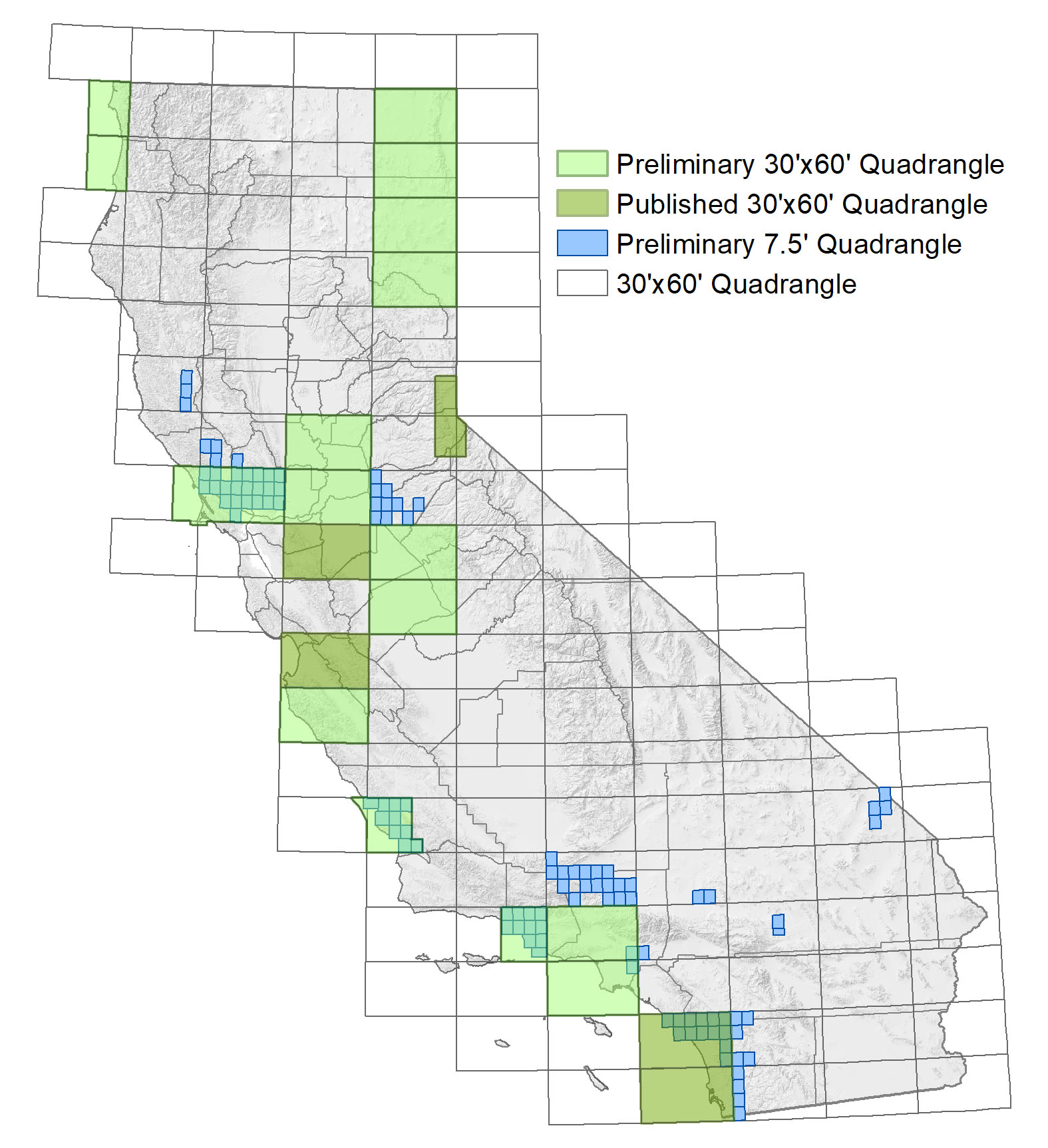 Above: Index map showing available quadrangles of the modern California Regional Geologic Map series. Smallest squares represent 7.5 minute quadrangles (1:24,000 scale). Larger rectangles represent 30-by-60 minute quadrangles (1:100,000 scale). Click or tap the image to open a larger version.
Above: Index map showing available quadrangles of the modern California Regional Geologic Map series. Smallest squares represent 7.5 minute quadrangles (1:24,000 scale). Larger rectangles represent 30-by-60 minute quadrangles (1:100,000 scale). Click or tap the image to open a larger version.
Preliminary Geologic Maps (PGM) are available only as PDF files, using the links provided below.
Printed versions are not available.
Geologic map preparation at the CGS generally follows a three-step process. First, we complete selected 7.5-minute quadrangles at 1:24,000 scale. Then we compile this mapping into 30-by-60-minute quadrangles at 1:100,000 scale; the 7.5-minute and initial 30-by-60-minute quadrangles are published on this page as Preliminary Geologic Maps. Following a period of review, 30-by-60-minute quadrangles are elevated into the
Regional Geologic Map series as the third step in the process, with the long-term goal of creating a seamless digital geologic map of the state at a scale of 1:100,000.
The California Geological Survey prepares geologic maps in cooperation with the U.S. Geological Survey's National Cooperative Geologic Mapping Program. Geologic mapping priorities are established by the California State Geologist and the California Geologic Mapping Advisory Committee.
For data requests and technical comments related to Geologic Mapping, please contact
Brian Swanson.
Preliminary 30-by-60 Minute Quadrangles (1:100,000 scale)
Preliminary 7.5 Minute Quadrangles (1:24,000 scale)
Select a region from the choices below to jump to a list of that region's 7.5 minute quadrangles.
Ukiah Region
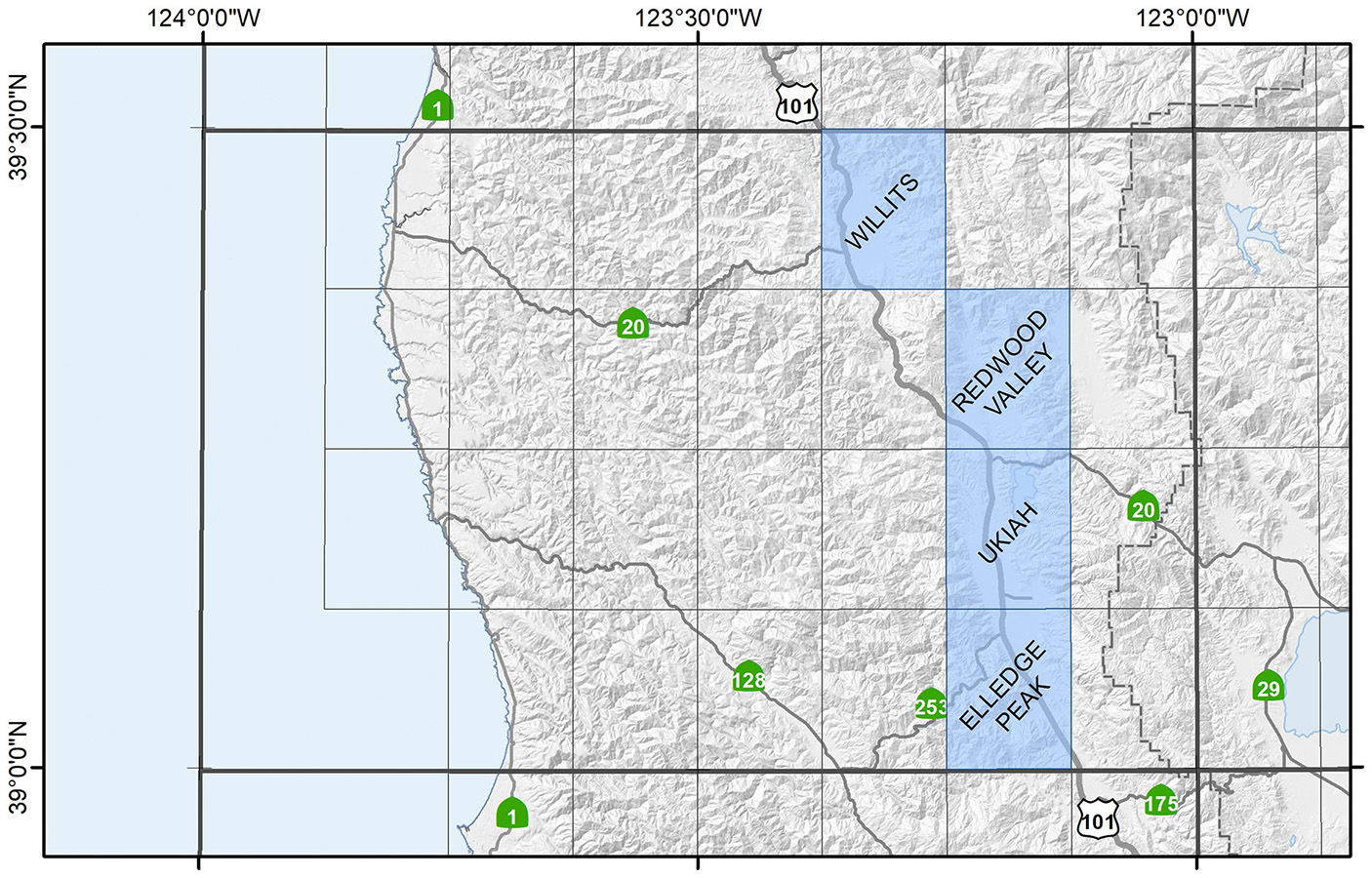
Healdsburg-Napa Region
Note: The 7.5 minute quadrangles within the Napa 30-by-60 minute quadrangle (outlined in red below) have been updated and are superseded by the Preliminary Geologic Map of
the Napa-Bodega Bay 30-by-60 minute quadrangle (Wagner and Gutierrez, 2017).
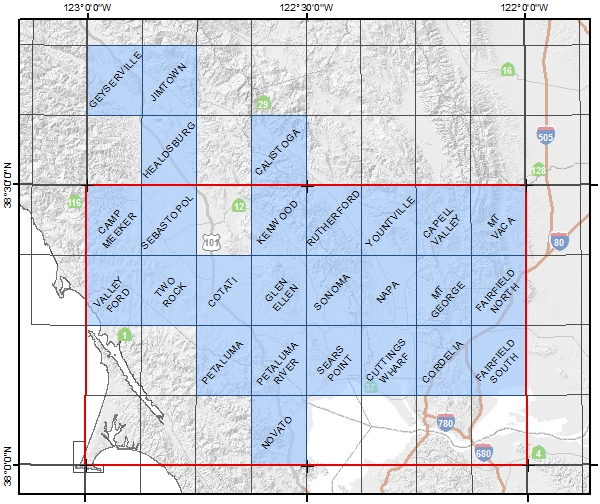
-
Calistoga, 2013 (4.1 MB)
-
Camp Meeker, 2009 (7.2 MB)
-
Capell Valley, 2006 (7.7 MB)
-
Cordelia, 1998 (3.6 MB)
-
Cotati, 2003 (4.2 MB)
-
Cuttings Wharf, 2002 (3.0 MB)
-
Fairfield North, 2006 (6.2 MB)
-
Fairfield South, 1998 (2.7 MB)
-
Geyserville, 2012 (3.6 MB)
-
Glen Ellen, 2003 (5.4 MB)
-
Healdsburg, 2011 (8.2 MB)
-
Jimtown, 2010 (9.0 MB)
-
Kenwood, 2007 (2.4 MB)
-
Mt. George, 2004 (3.4 MB)
-
Mt. Vaca, 2007 (2.8 MB)
-
Napa, 2004 (3.8 MB)
-
Novato, 2002 (2.3 MB)
-
Petaluma, 2002 (2.5 MB)
-
Petaluma River, 2002 (1.6 MB)
-
Rutherford, 2005 (11 MB)
-
Sears Point, 2002 (2.0 MB)
-
Sebastopol, 2008 (3.7 MB)
-
Sonoma, 2004 (3.7 MB)
-
Two Rock, 2003 (4.0 MB)
-
Valley Ford, 2008 (4.6 MB)
-
Yountville, 2005 (10 MB)
Truckee Region
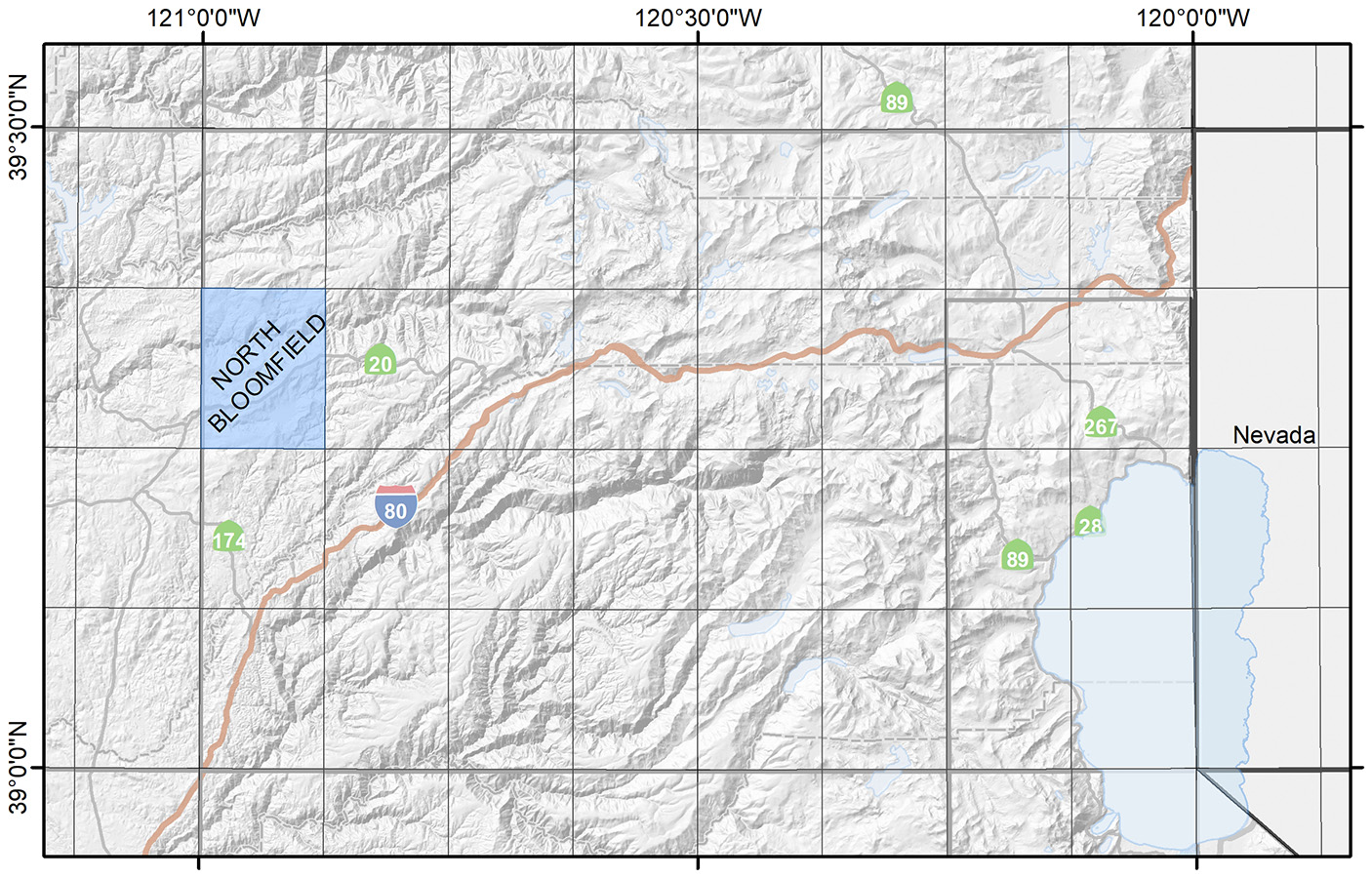
San Andreas Region
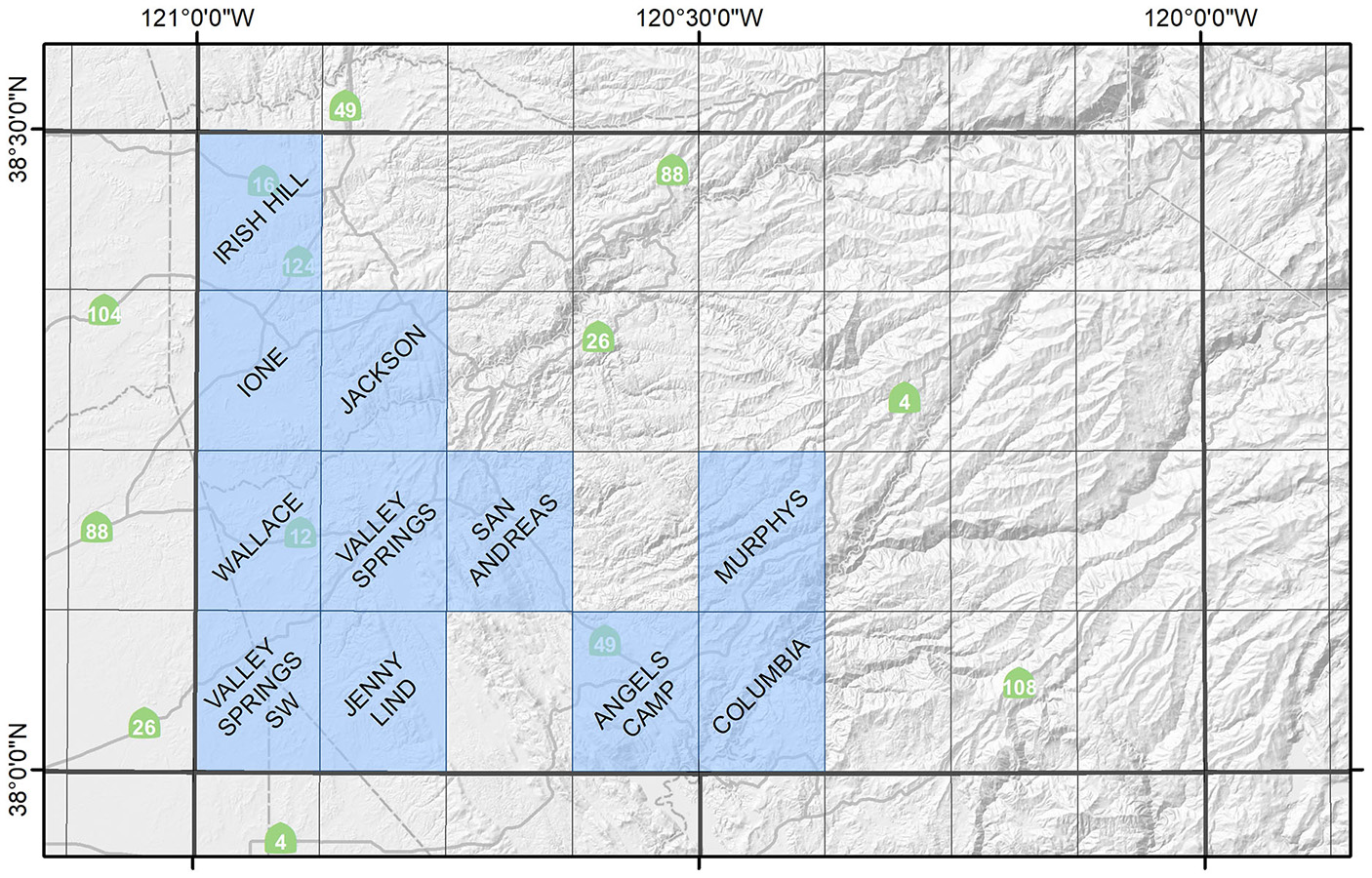
San Luis Obispo Region
Note: The 7.5 minute quadrangles shown below have been updated and are superseded by the Preliminary Geologic Map of the West Half of
the San Luis Obispo 30-by-60 minute quadrangle (Wiegers, 2018; un-simplified digital database available upon request).
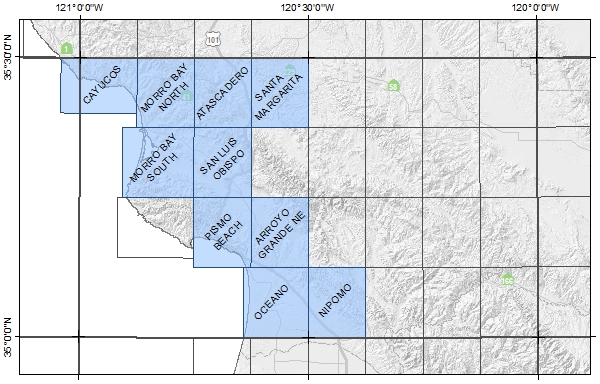
Lancaster-Victorville Region
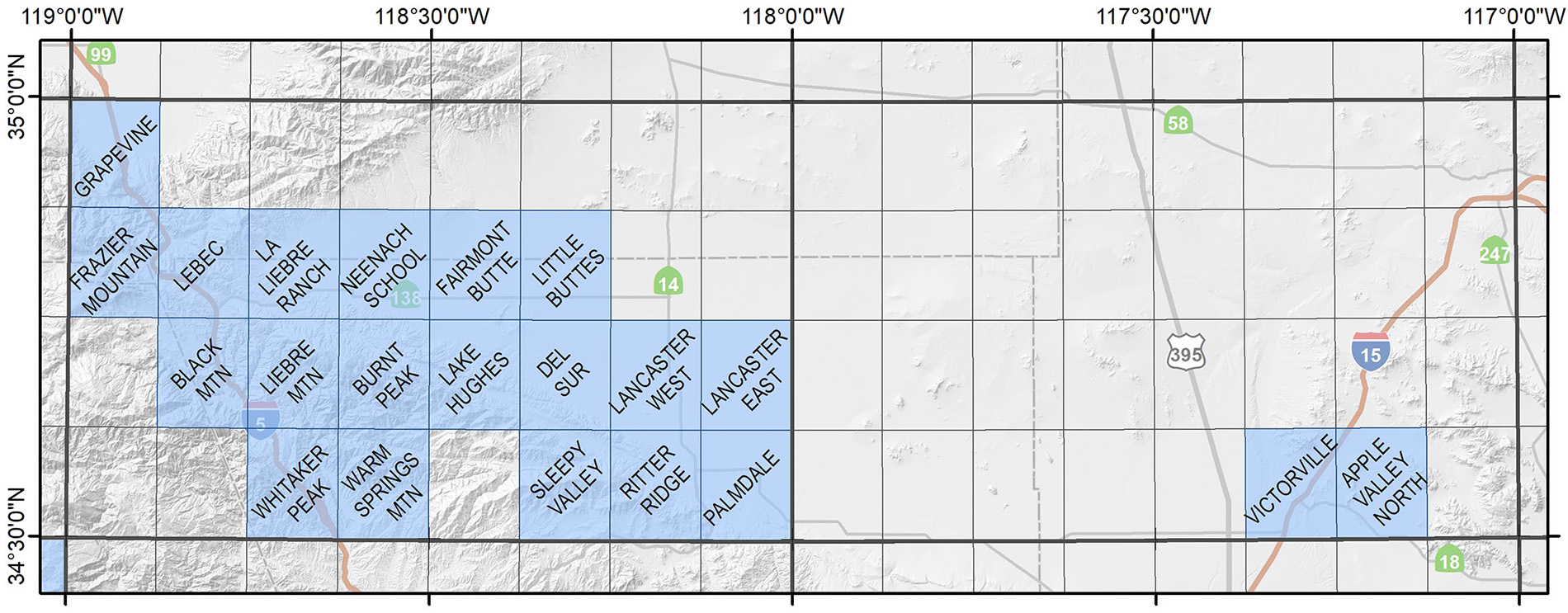
-
Apple Valley North, 2007 (3.1 MB)
-
Black Mountain, 2021, rev. 2024 (21.6 MB)
-
Burnt Peak, 2022 (19 MB)
-
Del Sur, 2010 (4.6 MB)
-
Fairmont Butte, 2011 (3.9 MB)
-
Frazier Mountain, 2016 (29.7 MB)
-
Grapevine, 2014 (3.5 MB)
-
La Liebre Ranch, 2019 (22 MB)
-
Lake Hughes, 2011 (6 MB)
-
Lancaster East, 2011 (3.5 MB)
-
Lancaster West, 2010 (3.8 MB)
-
Lebec, 2017 (27.6 MB)
-
Liebre Mountain, 2023 (16.6 MB)
-
Little Buttes, 2012 (2.1 MB)
-
Neenach School, 2022 (10 MB)
-
Palmdale, 2013 (4.2 MB)
-
Ritter Ridge, 2009 (8.6 MB)
-
Sleepy Valley, 2012 (4.3 MB)
-
Victorville, 2008 (6.4 MB)
-
Warm Springs Mountain, 2024 (33 MB)
-
Whitaker Peak, 2021 (15 MB)
Santa Barbara-Los Angeles Region
Note: The 7.5 minute quadrangles within the Los Angeles 30-by-60 minute quadrangle (outlined in red below) have been updated and are superseded by the Preliminary Geologic Map of
the Los Angeles 30-by-60 minute quadrangle (Campbell, et al, 2014).
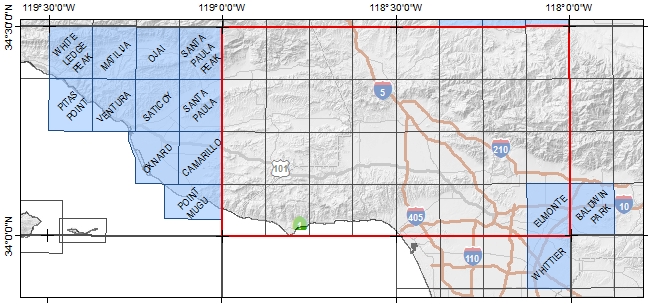
Big Bear Lake Region
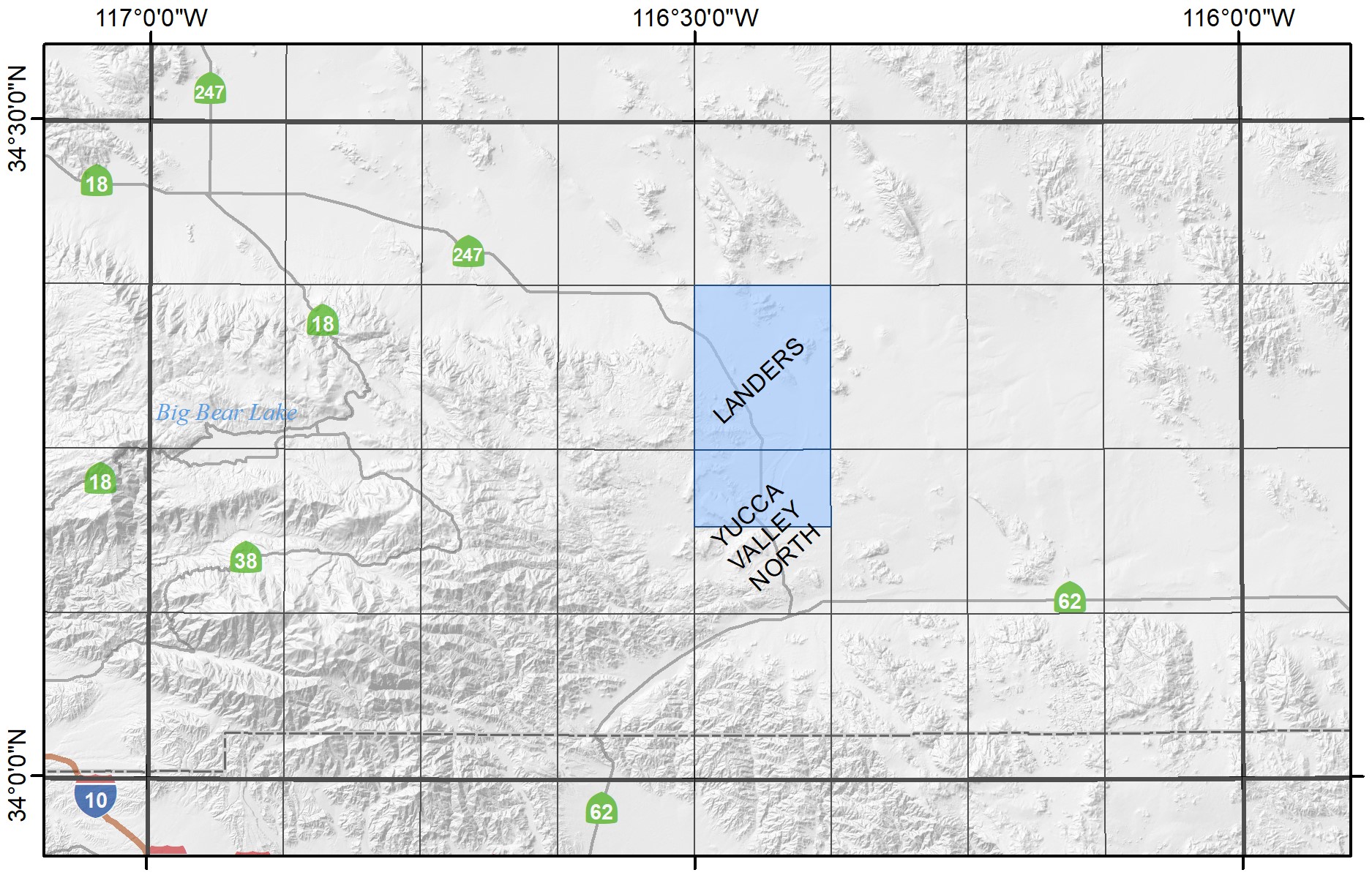
Oceanside-San Diego Region
Note: The 7.5 minute quadrangles within the Oceanside 30-by-60 minute quadrangle (outlined in red below) have been updated and are superseded by the Geologic Map of
the Oceanside 30-by-60 minute quadrangle (Kennedy and Tan, 2007).
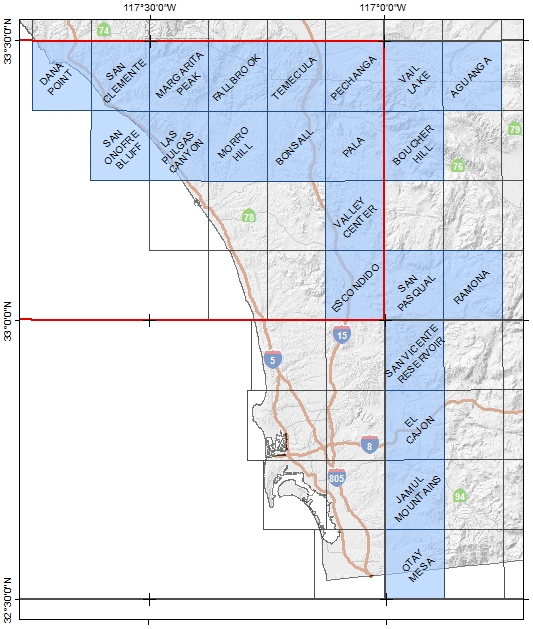
-
Aguanga, 2014 (5.2 MB)
-
Bonsall, 2000 (3.2 MB)
-
Boucher Hill, 2014 (8.9 MB)
-
Dana Point, 1999 (2.3 MB)
-
El Cajon, 2002 (2.2 MB)
-
Escondido, 1999 (2.7 MB)
-
Fallbrook, 2000 (4.7 MB)
-
Jamul Mountains, 2002 (2.1 MB)
-
Las Pulgas Canyon, 2001 (3.7 MB)
-
Margarita Peak, 2001 (5 MB)
-
Morro Hill, 2001 (3 MB)
-
Otay Mesa, 2002 (1.2 MB)
-
Pala, 2000 (4 MB)
-
Pechanga, 2000 (4.2 MB)
-
Ramona, 2006 rev. 2013 (7.0 MB)
-
San Clemente, 1999 (5.2 MB)
-
San Onofre Bluff, 1999 (1.9 MB)
-
San Pasqual, 2007 (2.5 MB)
-
San Vicente Reservoir, 2002 (1.7 MB)
-
Temecula, 2000 (4.8 MB)
-
Vail Lake, 2014 (6.2 MB)
-
Valley Center, 1999 (3.3 MB)
New York Mountains-Ivanpah Region

Imperial County-Yuma Region
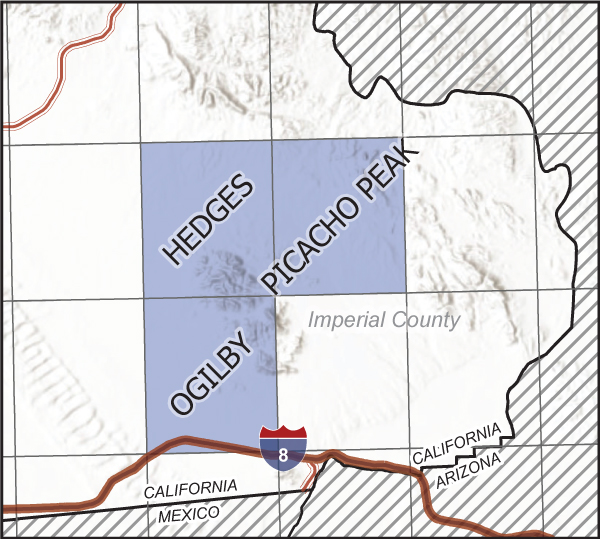
Web page by:
California Geological Survey - Regional Geologic and Landslide Mapping Program
